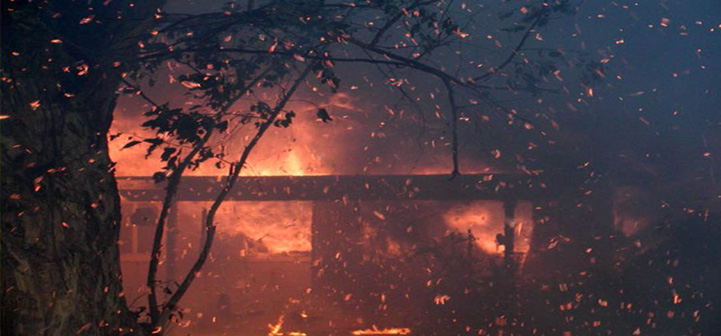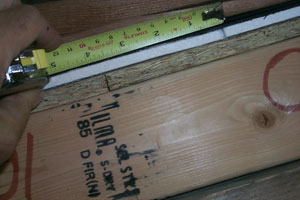Article Written by:
Stephen L. Quarles, Senior Scientist, Insurance Institute for Business & Home Safety, Richburg, SC
Fire ratings for roofs are classified as either Class A, Class B, Class C or are unrated if a roof covering cannot meet the requirements for any of these classifications. Class A is the highest rating, offering the highest resistance to fire, and unrated is the worst. Examples of a Class A roof covering include concrete or clay roof tiles, fiberglass asphalt composition shingles and metal roofs. An example of an unrated covering is an untreated wood shake roof. If wood shakes and shingles are impregnated with fire retardant chemicals, they meet the requirements for a Class B fire rating and can meet a Class A rating if additional materials are included in the roof assemblies.
A standard fire test is used to determine the fire rating of a roof covering. This test evaluates the following performance criteria: 1) flame penetration through the roof covering into the attic space, 2) flame spread over the surface of the roof covering, and 3) the propensity for the roof covering to become dislodged and generate embers.
Some roof coverings rely on an underlying material, or special installation techniques, to improve their fire rating. Fire ratings for roof coverings that require an additional material are typically referred to as a “by assembly,” as opposed to a “stand-alone,” fire rating. If the roofing manufacturer requires that the fire rating be obtained,the installation instructions and additional material must be included in this test. Examples of a by assembly fire rating include fire-retardant treated wooden shakes and aluminum roof coverings. An exterior fire-retardant treated shake roof has a stand-alone Class B rating; but by including a particular underlying material it can meet the requirements for a Class A roof. Common underlying materials include a Type 72 roll roofing material — also known as 72-pound felt or 72-pound capsheet material — and a panelized gypsum product called DensDeck. Another example of a by assembly Class A roof covering includes an aluminum (metal) roof. Even though aluminum is considered a non-combustible material because of its relatively low melting point, it needs the additional underlying material to achieve the Class A fire rating.
In order for a given roof covering or assembly to be considered Class A, fire cannot penetrate through the roofing assembly into what would be the attic. Surface flame spread and ember generation requirements must also be met.
The required roof fire rating depends on the fire hazard rating where you live. Your local building or fire department can provide you with that information.



